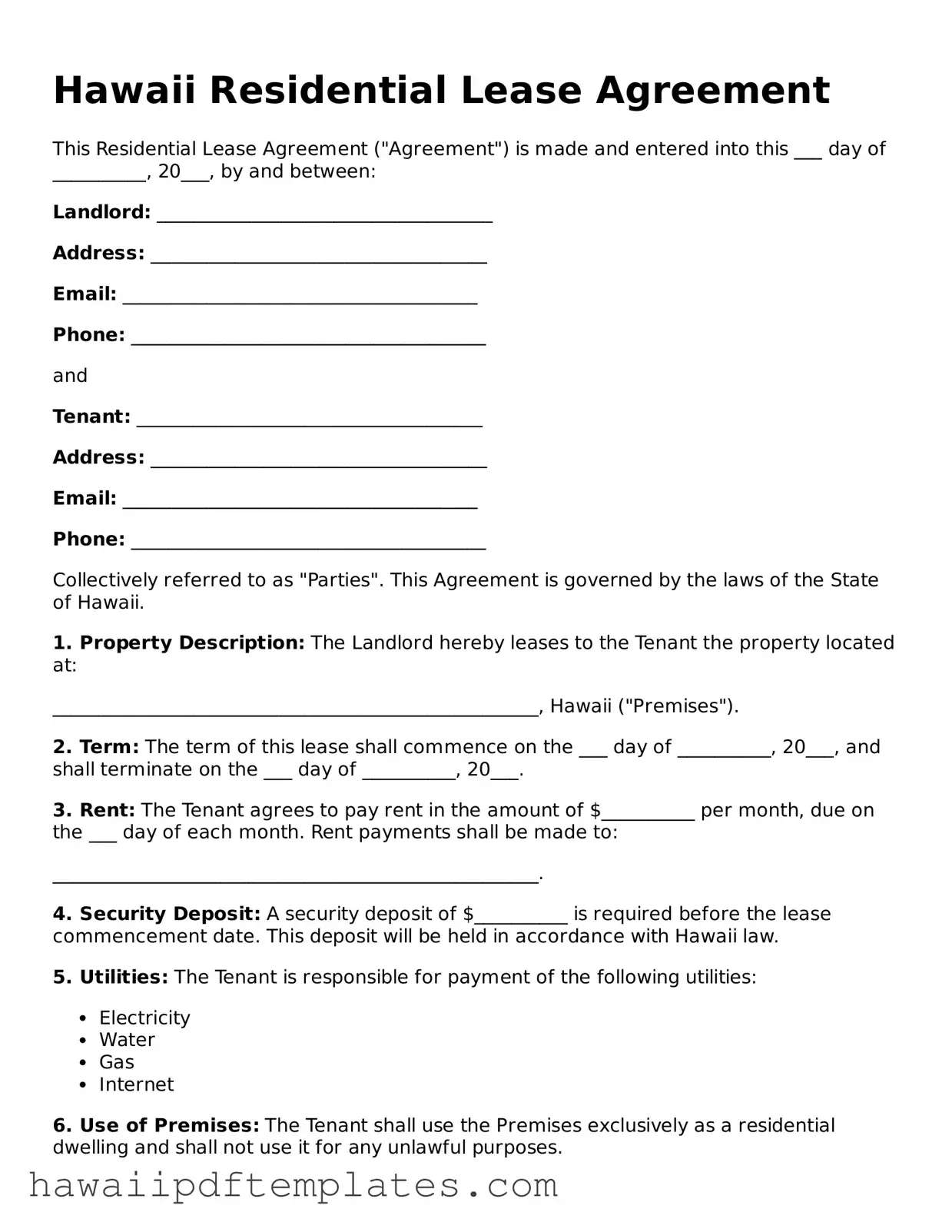Steps to Writing Hawaii Residential Lease Agreement
Filling out the Hawaii Residential Lease Agreement form is an important step in establishing a rental relationship. By completing this form accurately, both landlords and tenants can ensure that their rights and responsibilities are clearly defined. Follow these steps to fill out the form correctly.
- Begin by entering the date at the top of the form. This date indicates when the lease agreement is being executed.
- Next, provide the names of all parties involved. This includes the landlord's name and the tenant's name(s). Make sure to spell names correctly.
- Fill in the rental property address. This should include the street number, street name, city, and zip code.
- Specify the lease term. Indicate whether the lease is for a fixed term (e.g., one year) or month-to-month.
- Enter the monthly rent amount. Clearly state the dollar amount that the tenant will pay each month.
- Outline the security deposit amount. This is typically one month's rent but can vary based on the agreement.
- Include details about payment methods. Specify how the tenant should submit rent payments (e.g., check, online transfer).
- Address any additional terms. This may include rules about pets, maintenance responsibilities, and other relevant policies.
- Both parties should sign and date the form. Ensure that all signatures are present before finalizing the agreement.
After completing these steps, both parties should keep a copy of the signed lease agreement for their records. This document serves as a reference throughout the duration of the lease.
